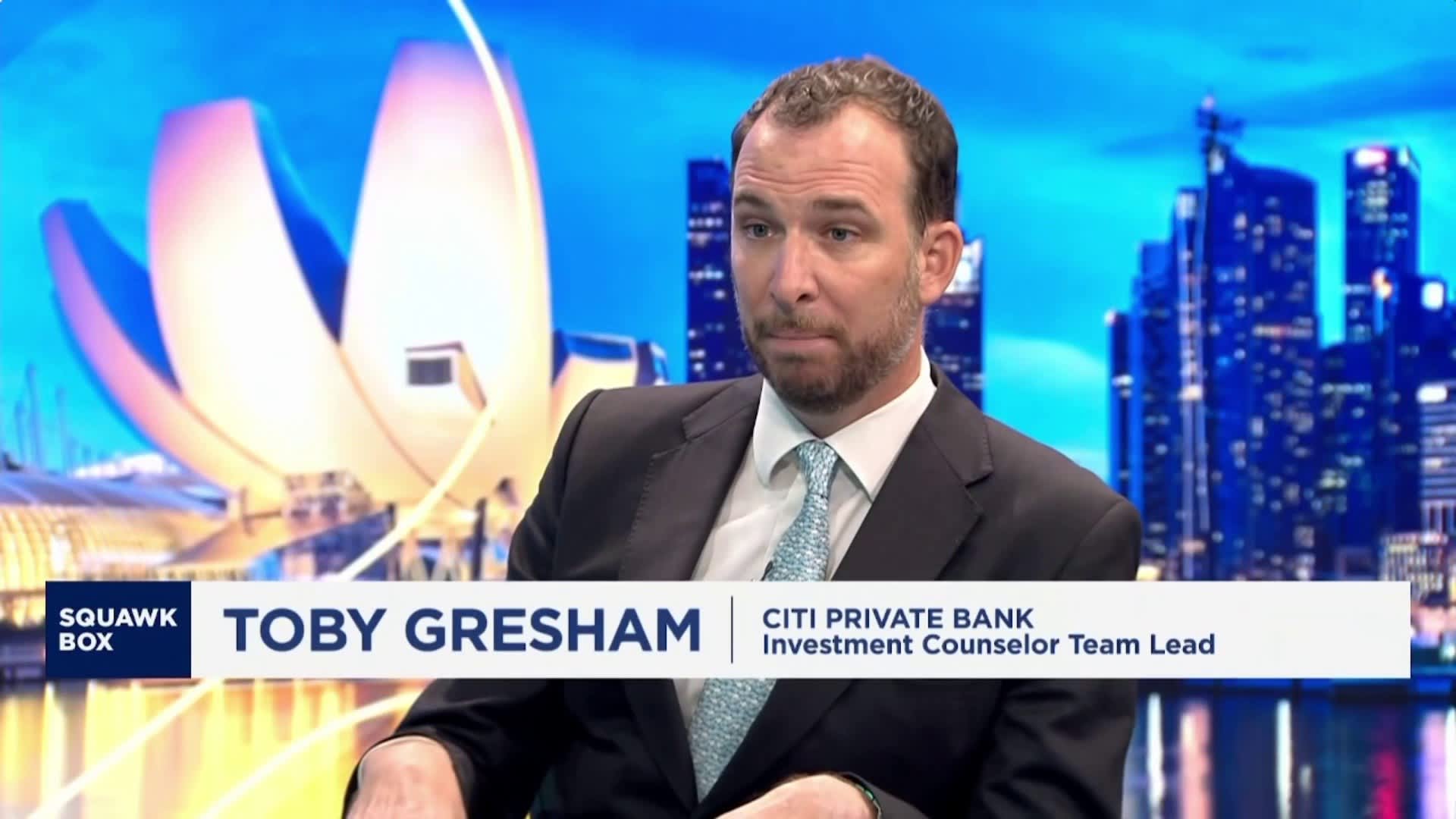Japanese 1,000 yen, 5,000 yen and 10,000 yen banknotes arranged in Kyoto, Japan, on Thursday, Nov. 2, 2023. The contradictions in Japan’s efforts to protect the yen while slowing the pace of rising bond yields are becoming increasingly clear in currency and debt markets. Photographer: Kentaro Takahashi/Bloomberg via Getty Images
Kentaro Takahashi| Bloomberg | Getty Images
Japan’s yen has traditionally been viewed as a safe-haven asset, shielding investors from the impact of economic and market turbulence — and that status is very much intact despite the wild swings in the currency this year, according to analysts.
Throughout most of 2024, the yen has seen sharp volatility, with the currency weakening to levels not seen since 1986 and prompting the Bank of Japan to intervene in July to support the currency. The BOJ had earlier stepped in to prop up the yen in May when it had depreciated to 160 against the U.S. dollar.

After the BOJ’s decision in July to raise rates, Japan’s stock market and currency saw huge swings. The Nikkei clocked its largest one-day loss since 1987 on Aug. 2 as the yen reversed course to strengthen dramatically.
Brushing aside the volatility in the Japanese yen, analysts that CNBC spoke to said the yen’s safe-haven status remains largely intact due to the currency’s “predictability.”
“We believe we can call it a ‘safe haven’ given the fact that Japan remains [the world’s] largest external creditor, and is seeing sustainable current account surplus and inflation [in the country],” said Ryota Abe, an economist at Sumitomo Mitsui Banking Corporation. Deficits tend to weaken currencies while surpluses strengthen them.
Hugh Chung, chief investment advisory officer at wealth and fund platform Endowus said the currency strengthens reliably when U.S. bond yields and equities fall at the same time, such as the crash of 2008 and the Covid-19-induced meltdown of 2020.
On the other hand, the yen tends to weaken against the greenback during periods of risk-off sentiment if U.S. yields rise while equities fall, Chung added, citing the development in2022 when the U.S. Federal Reserve raised rates to combat inflation.
Chung attributed the sharp volatility in yen this year to the large difference in U.S. and Japanese government bond yields. The 10-year Japanese government bond yield stands at just over 1%, while the 10-year U.S. Treasury yield is close to 4%.
Just before the BOJ scrapped its yield curve control policy on March 18, the differential was even wider, with the 10 year JGB at 0.796% and the 10 year Treasury yield at 4.304% as of March 16, the last trading day before the BOJ’s announcement.

This interest rate differential had led to what is known as the “carry trade,” where investors borrow cheaply in yen to invest in higher yielding assets.
When the Bank of Japan raised interest rates, this prompted the yen to strengthen, gaining over 12% in the space of about three weeks against the dollar from the July 3 level of 161.99 to 141.66 on Aug. 5, with investors scrambling to unwind the “carry trade.”

Chung, who said the yen has not lost its characteristic of being sensitive to U.S. interest rates, said it will remain a safe-haven asset during a growth scare.
Is the BOJ to blame?
SMBC’s Abe said that the high volatility in yen has been caused by changes in the external market environment, rather than internal factors within Japan.
The most “powerful contributing factor” for the high volatility seen in August was “excessive anxiety” over the U.S. probably falling into a recession after it posted higher-than-forecast unemployment figures and lower-than-expected job growth.
“Of course, I do not completely exclude the impact of BOJ’s surprise rate hike in July, but it was only 15 [basis points], and the initial reaction towards the BOJ’s decision was quite mixed,” he added.
If the BOJ’s decision was the cause of the volatility, the market reactions would have been much stronger, Abe said, adding that the yen “should have been bought back immediately after the BOJ’s decision, but that was not the case.”
The BOJ’s decision was announced during the trading session on July 31, but the yen only moved significantly during the trading session on Aug. 2 and Aug. 5.
Yen forecast
Abe forecasts that the yen will trade around 145 to the dollar this year, and any further strengthening will depend on the pace of rate cuts from the Fed, which he calls “crucially important.”
He expects the currency to strengthen to about 138 against the dollar by the end of 2025 with “some high volatility,” adding that it could hit 130.
This volatility may come from the BOJ’s monetary policy moves, but Abe does not foresee any rate hikes from the BOJ “for now.”
He does not completely rule out a rate hike by the central bank, noting that second quarter GDP showed a stronger-than-expected recovery in private consumption, which could bolster the case for a hike.

Chung differs in his assessment: “The volatility of the yen has probably seen its peak this year given that the unwinding of the ‘carry trade’ has already partially happened and the actions of the central banks will likely be less of a surprise to the markets.”
The two experts agreed that the yen’s path will likely be dependent on the growth outlook of the U.S. economy.

